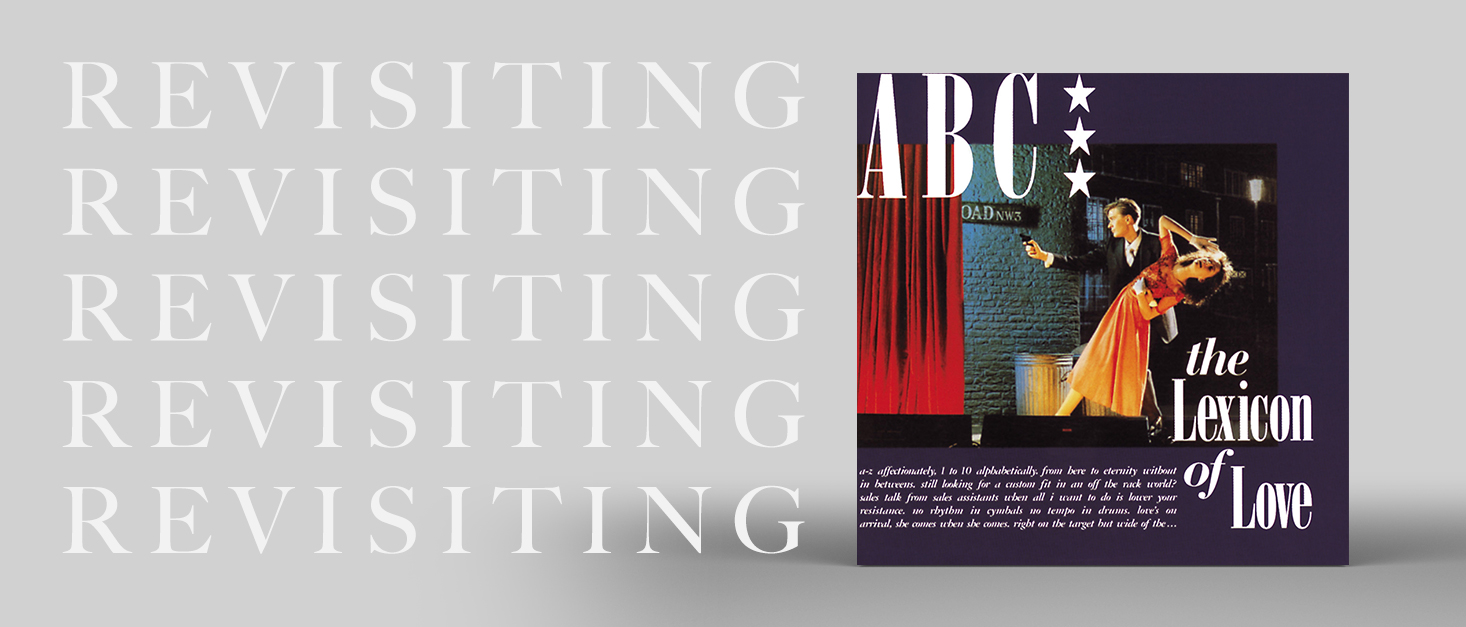From the early 1980s onwards, Trevor Horn built a reputation as one of the UK’s top record producers. The former member of The Buggles and Yes worked on a diverse range of albums, and with each new project, he managed to conjure a catchy yet ultra sophisticated sound. He produced some of the biggest hits of the 80s and 90s – from Frankie Goes to Hollywood’s ‘Relax’, to Seal’s ‘Kiss from a Rose’ – but one of the high points of his career was working on Sheffield-based indie-pop group ABC’s debut album back in 1982.
“I've made a lot of albums in my many years as a record producer, but this one stands out”, he said in 2007. “The material, the songs. The melodies are beautiful, but it's the lyrics that really make the album special…. In my 30 years of making records, this is without doubt the best set of lyrics for a whole album that I've ever had to work with.”
Indeed, it’s the vocals that set The Lexicon of Love apart. The album’s production and musicianship are top tier, but the lyrics – which depict a young man’s experiences of love and heartache – are highly memorable, and brilliantly delivered by lead singer Martin Fry.
“Listened to now … The Lexicon of Love feels strangely timeless”
When you've got great songs, you still need someone to sing them, and Martin was such a person”, Horn later recalled. “When we started Lexicon, Martin was a fairly inexperienced singer – he’d only been in a little synth band. But as the album went along, his confidence grew and he really took a lot of chances.” As Horn later recalled, Fry was able to capture both a wide range of emotion, and “an edge of humour” in his delivery – a winning combination.
Listened to now, more than 40 years after its initial release, Lexicon… feels strangely timeless. That’s perhaps because it wasn’t particularly of its time. The only era identifying marks are the presence of classic analogue synthesisers and the lack of compression. Musically, there’s lots of Chic-style funk – an homage, perhaps, to the Brit Funk movement that was happening behind the scenes at that time – plus shades of Bryan Ferry-style crooning, with a dash of Frank Sinatra. This is all set to strong four-on-the-floor rock drumming and soaring strings performed by Horn’s Art of Noise co-conspirator Ann Dudley.
“Fry demonstrates a skilful use of his vocal range, with a sultry yet characterful voice”
The result is a polished, upbeat and expansive sound. The album’s songs are distinct, yet each one flows perfectly into the next. Fry demonstrates a skilful use of his vocal range, with a sultry yet characterful voice, and delivers each word in just the right way. Looking back on the project, Horn once said, “I remember that the band said to me, ‘if you get to produce us, you’ll be the most fashionable producer in the world, because we’re the most fashionable band in the world!’”
ABC did indeed look as if they’d be better suited to the cover of Vogue than Smash Hits. The band’s record company placed countless advertisements for their single releases in The Face, the iconic fashion and culture magazine founded by Nick Logan (and recently revived for a new generation).
In media interviews done to support Lexicon, Fry demonstrated a sharp and erudite wit, along with a keen sense of his band’s importance. Yet he could be self-deprecating too, and among the clever world play, his lyrics were often tinged with sadness or irony. In ‘Valentine’s Day’, he writes: “If you gave me a pound for the moments I missed, And I got dancing lessons for all the lips I shoulda kissed, I’d be a millionaire, I'd be a Fred Astaire…”
Lexicon has much to offer beyond its four superb singles – ‘Poison Arrow’, ‘Tears Are Not Enough’, ‘The Look of Love’ and ‘All of My Heart’. The album tracks are also outstanding. ‘Show Me’ and ‘Date Stamp’ are particular highlights, with the band showcasing their impressive musical talents. Guitarist Mark White, saxophonist Stephen Singleton, drummer David Palmer and bassist Mark Lickley were a formidable combination, aided and abetted by Anne Dudley on keyboards. Also helping on keyboards was accomplished player and computer programmer J. J. Jeczalik, who worked on the Fairlight CMI synthesiser (more on that later).
“This was arguably the first album that came showcased “clever Trevor’s” work in its highest form”
According to Horn, White proved to be “a wonderful guitar player who also wrote music and worked out most of the arrangements on the album”. Singleton, meanwhile, demonstrated “a deep understanding of the context of the music on the album, and played very sparingly”. Palmer proved himself to be a gifted drummer, while Dudley contributed some excellent string arrangements that still sound fresh four decades on.
Alongside great songs, memorable lyrics and first-rate musical backing, there is Horn’s artful production. This was arguably the first album that came showcased “clever Trevor’s” work in its highest form: in later projects, he made his effect on the finished product less obvious, but here it really shines.
By 1982, Horn had six solid years of studio experience, including making the complex production that was Yes’s Drama. This led him to experiment with some special recording techniques for Lexicon, such as getting David Palmer to play along to drum patterns recorded on a Roland TR808 drum machine, and the album’s bass player to play along with a bassline that Horn had programmed into a Minimoog synth.
Horn was aided by engineer Gary Langan – whom he described as “full of confidence” – and Jeczalik, who worked his magic with the Fairlight CMI. The synthesiser was, at the time, new and hugely expensive. “You could buy a house for that money,” Horn later said. “But don’t forget, I’d sold 10 million copies of Video Killed The Radio Star, so I could afford it. And I knew what it could do…. I immediately gave it to JJ, because he just devoted his life to it for a while.”
Recorded on high speed analogue tape, Lexicon was largely mixed at Horn’s Sarm East Studios in London, using one of the first Solid State Logic 4000E consoles. Musos now regard this then-futuristic 48-track electronic desk as an iconic piece of classic studio equipment. Along with the Fairlight, it provided plenty of what Horn once referred to as “ear-grabbing sonic trickery”.
“The album is bristling with production details that you can only discern on a top-tier hi-fi system”
Various rumours and legends surrounded the making of the album. One story goes that Horn insisted that the vocalist intoning “goodbye” in ‘The Look of Love’ had to be Fry’s ex-girfriend, who had just broken up with him. Another was that Horn sacked ABC’s bass player and replaced him with Brad Lang. “He [Lang] was a combination of Bernard Edwards and Jaco Pastorius. When I asked him to come along and play with [the band], they got it straight away”, Horn later recalled.
The album is bristling with production details that you can only discern on a top-tier hi-fi system. For example, one of the key sounds on ‘All Of My Heart’ is a Fender Rhodes keyboard doubling up with a grand piano all the way through. Mark White’s guitar parts were soaked in then-new digital studio effects, such as the chiming electric guitar at the start of ‘Date Stamp’. “We just hung everything on it we could”, said Horn. Martin Fry’s vocals were allocated seven tracks on the mixing desk, and Horn got him to sing each song seven times, piecing together the best bits from all the takes.
Released on June 21, 1982, Lexicon went straight into the UK album charts at number one, and later became the fourth best selling album of the year. It achieved Platinum status in the UK, and Gold in the USA. Described by one American rock journalist as “sumptuous kitsch”, it certainly caught peoples’ attention. Another called it “a casserole of about 40 different pop hits and advertising jingles”. As Horn once explained, it was designed to captivate listeners from start to finish. “We were aiming to keep you interested all the way through, not let it flag anywhere. Keep the arrangements exciting – because that’s what Nelson Riddle used to do with Frank Sinatra.”















